I am designing a comparator circuit based on a simple opamp (not a dedicated comparator). But, I read that using an opamp as a comnparator is foolish and undesirable. Why so ? A comparator is nothing but an opamp. WHat is the reason? Also, the reference I am giving a voltage via voltage divider and a Zener. This is shown in fig below -
This zener will make sure that the voltage at inverting terminal is constant 3V. The other input is fed ideally 3V and when it shoots up to , say 5V, the output of the opamp goes high to 5V.
Now, in one of my posts it was stated that there should not be a resistor in parallel with zener . Why so ? If I dont step it down how can the refernce voltage work ?
